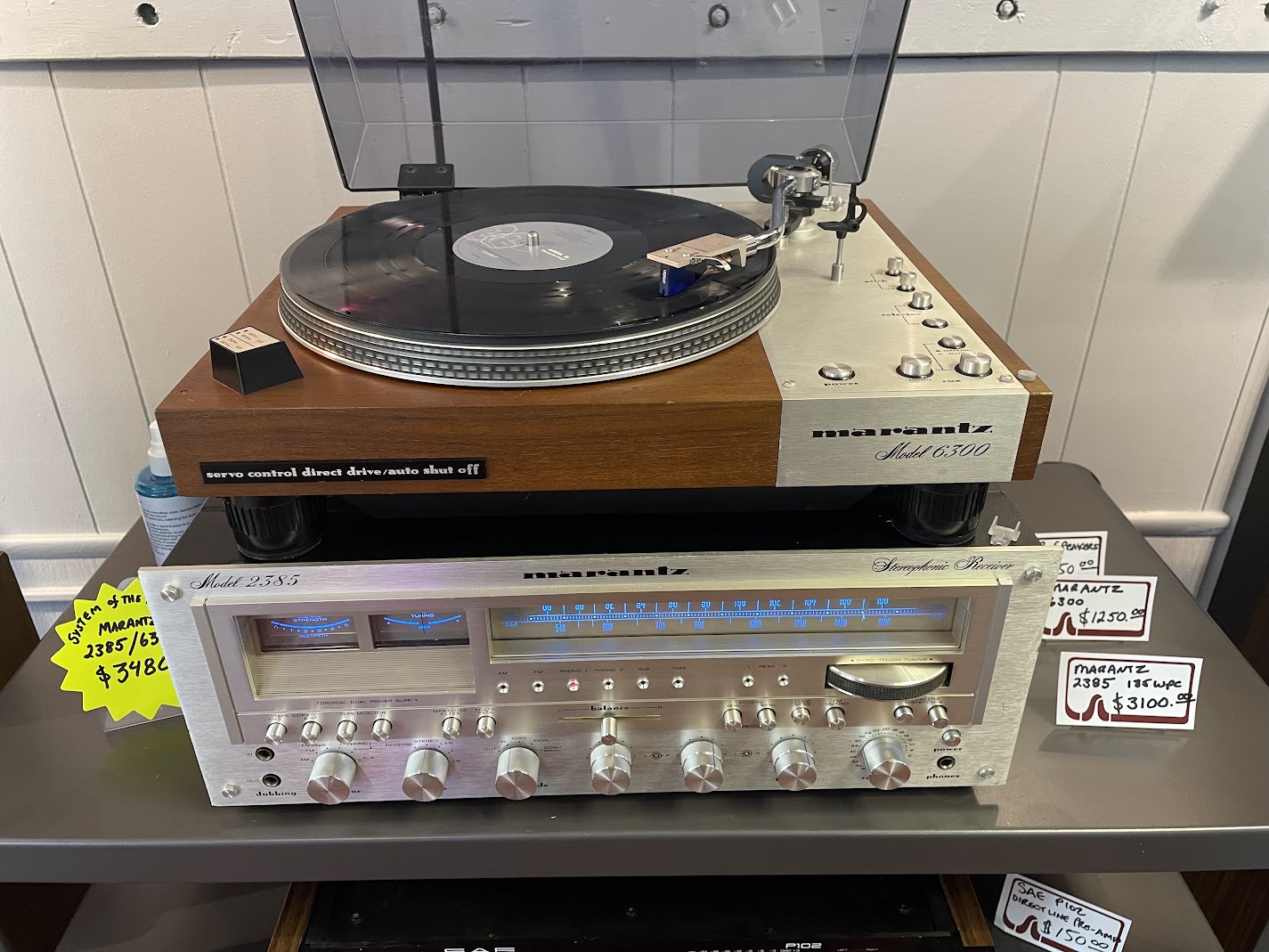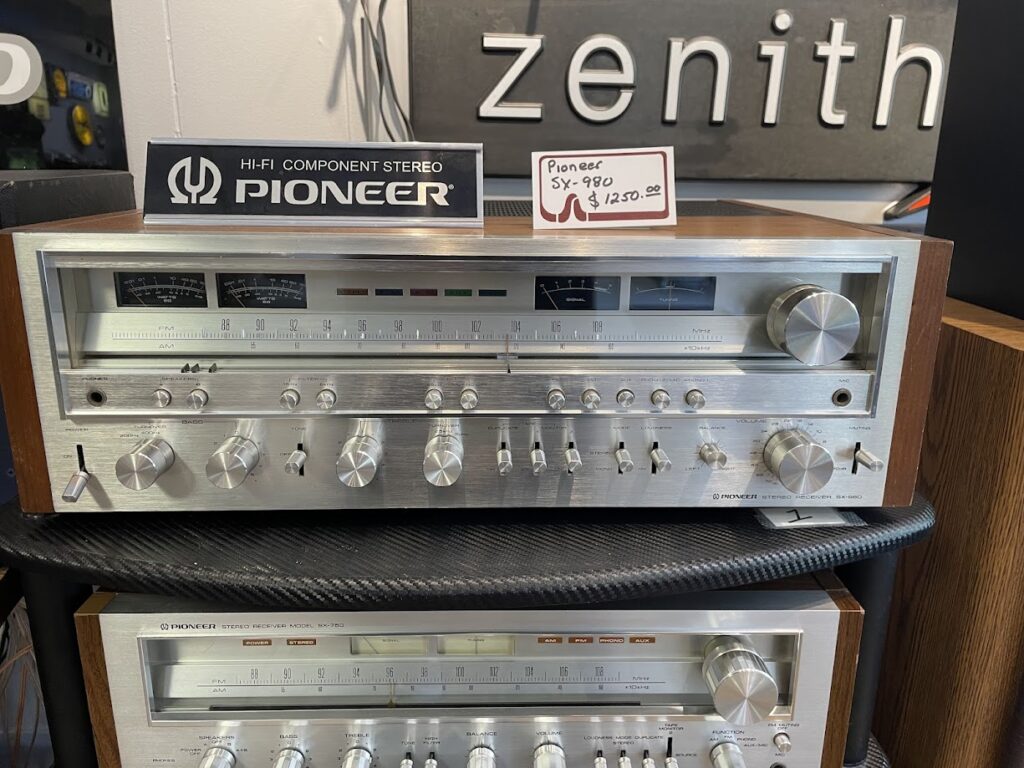We are here to help our customers learn about audio and specifically vintage audio, since there are things that have to happen to get the most from your system. We pride ourselves on being educators as well as technicians. Below are a sample of questions we answer on a daily basis.
Why does the turntable I just bought from you sound so bad?
Usually this is because you just bought a brand new modern piece. We sell TEAC turntables and every model we sell comes with an onboard phono pre-amp. This is because many modern amps do not have an onboard phono pre. The signal from your turntable cartridge is very small, there is not enough signal there for the amp to work with. If you are listening to a record on a piece with no pre-amp it will sound very far away or you may need to turn the amp all the way up to hear anything. Vintage amplifiers and receivers all have phono pre-amps on board. The idea was you were going to take the piece home and connect a turntable to it. Modern A/V systems many times do not have one. Thus the built in preamp on the new turntable. On the back of the piece there is a switch, this switch says “line / Through” or On/ Off either way, switch this to “Through” or “off” and it will sound correct again. What is happening is the pre amp on board the piece is overdriving the preamp onboard your vintage piece.
Why does it take so long to repair my stereo?
Our wait time is typically 8-10 weeks. We operate on a skills based system, so your piece may take longer or not depending on the repair. For instance I (Scott) am very good at Marantz receivers, I may pick one up at any time even though it is not next chronologically. Additionally, we have a tech that is very good at turntables, and another that only works on the antique gear. Sometimes all 4 technicians get stuck on a piece at once. This is NOT a cookie cutter business. Every piece is different with a different history and different problems. While in general there are similarities, each piece is unique. We work hard to repair a piece efficiently and in a reasonable amount of time but if your piece is taking a bit longer, please be patient. I assure you, we are doing our best.
Are you related to the Stereo Lab on Neil Ave. ?
In 1970 the original Stereo Lab was located on Neil Ave. near campus. The original store was referred to as Andersons Stereo Lab. In the 1980’s the business was sold to a group of investors that eventually turned it into a seven store retail chain. There was a maximum of 4 locations in Columbus, two in Cincinnati and one in Wheeling. In 1996 the chain closed, and three guys from the service department started Stereo Lab Service. Our current location is in the same spot as that store. Fast forward to 2019, I bought Stereo Lab Service and changed the name back to Stereo Lab to take advantage of an iconic name in Columbus for 50 years. We still have one of those service techs. Our friend and senior tech Joe is still here and still helping our customers get the most out of their gear. We are still primarily a repair shop but sell used vintage gear that has been inspected, repaired, cleaned and carries a 90 warranty. Our retail space was leased in 2022 and we expanded into a fun destination for the vintage audio enthusiast.
Do You Buy Used Gear?
We buy gear all the time, but we are a little picky. We can only buy what we can service and sell. If your piece is big, silver and heavy, we probably are very interested. We work hard to offer fair pricing but keep in mind that we are retailers and will need to go through your piece before we can sell it with a warranty. We are not going to offer high eBay prices but once again we will be fair with you. Your best avenue to sell your used gear is to bring it by the shop and let us get eyes on it, we can then usually make an offer on the spot. Conversely, you can shoot photos and send them to phresh@stereo-lab.com .
The piece you just repaired still sounds bad! What is happening?
First off, relax, you have a 90 day warranty. When we send a piece home it has been thoroughly tested and is ready to enjoy. We will never knowingly send a piece out of here that is not passing its tests. However the stuff is old, sometimes when we fix something, another component is suddenly getting voltage to it and soon it breaks too. While technically this is not part of the original repair, we will typically fix it under warranty anyway. We also find that somewhere around 80% of our call backs are related to user error. We are here to educate, so do not hesitate to let us know what you are experiencing and how we can help. Also cables and connectors are so important. We sell higher end cables but also give away some nice cables upon request. We find that offering new cables is a great way to avoid problems. Always look for another issue, there a many parts that need to come together to make your music sound good. Is it your cables? Is it your turntable (or other source)? What about speakers? We are here for you regardless, we are happy to help.
Another typical problem is dirt. We say dirt is the devil around here. Dirt in potentiometers and switches cause many problems. We disassemble the piece so we can get to the parts needing cleaned, we use commercial contact cleaner and then dress with a quality deoxidizing product. Sometimes dirt will work back into a switch or pot that has already been cleaned, this is fairly common but an easy fix.
Where are you located?
We hear this one all the time. Our hours and location are well publicized online but here it is again.
4538 Indianola, Ave. Columbus, Ohio 43214
This is about half a mile south of Morse Rd. Just two turns off I 71 in Columbus.
Open Monday through Friday 10 – 6 and Saturday 10-3




